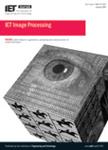版权所有:内蒙古大学图书馆 技术提供:维普资讯• 智图
内蒙古自治区呼和浩特市赛罕区大学西街235号 邮编: 010021

作者机构:Cochin Univ Sci & Technol Div Elect Kochi Kerala India
出 版 物:《IET IMAGE PROCESSING》 (IET影像处理)
年 卷 期:2019年第13卷第11期
页 面:1846-1852页
核心收录:
学科分类:0808[工学-电气工程] 1002[医学-临床医学] 08[工学] 0812[工学-计算机科学与技术(可授工学、理学学位)]
主 题:image classification learning (artificial intelligence) filtering theory Bayes methods adaptive filters image resolution minimisation least squares approximations extended kernel recursive least squares kernel recursive least squares tracker naive online regularised risk minimisation algorithm super-resolution method single-image super-resolution online kernel adaptive filters nonlinear filters kernel algorithms low-resolution image dictionary high-resolution image patches different kernel adaptive filters noise figure 1 2 dB
摘 要:The online kernel adaptive filters are non-linear filters which provide impulse response and are more efficient compared to other kernel algorithms. The performance of kernel adaptive filters depends on dictionary size. Here the single-image super-resolution using online kernel adaptive filters is a learning-based method. The algorithm generates a sparser solution for obtaining high-resolution image from a low-resolution image. It finds out a dictionary with most significant set of basis vectors using the spatial similarity among the dictionaries created from the low-resolution and high-resolution image patches in the training set. The dictionary is utilised to generate the high-resolution image. The algorithm is analysed on three different kernel adaptive filters, extended kernel recursive least squares, kernel recursive least squares tracker and naive online regularised risk minimisation algorithm. The performance of the super-resolution method is evaluated on a large number of images and is compared with the state-of-the art non-linear solutions to the super-resolution. The results show a better progress in peak signal-to-noise ratio up to 1.2 dB.